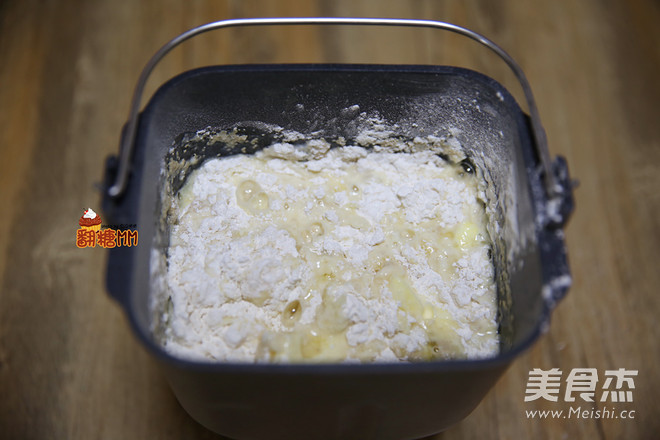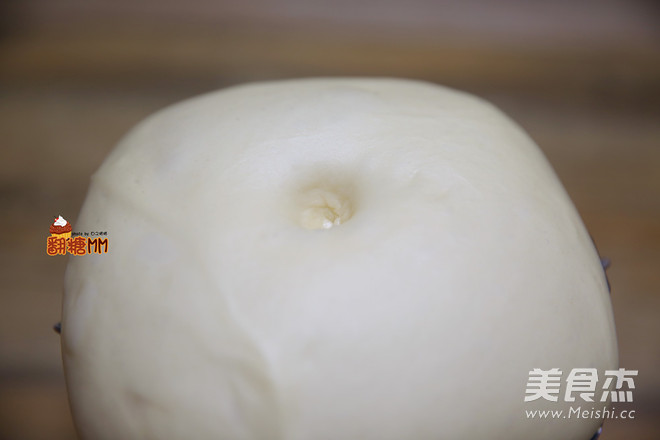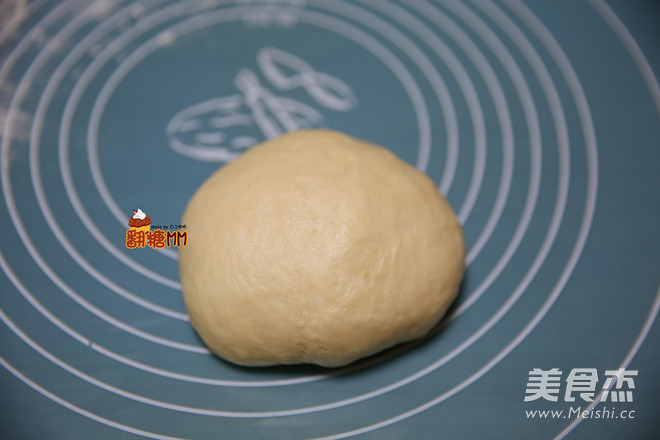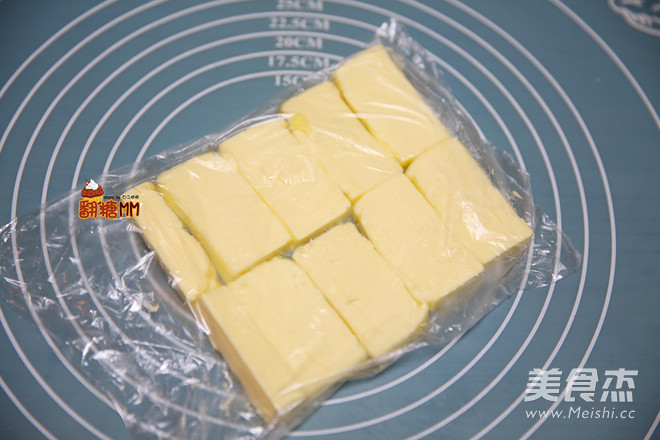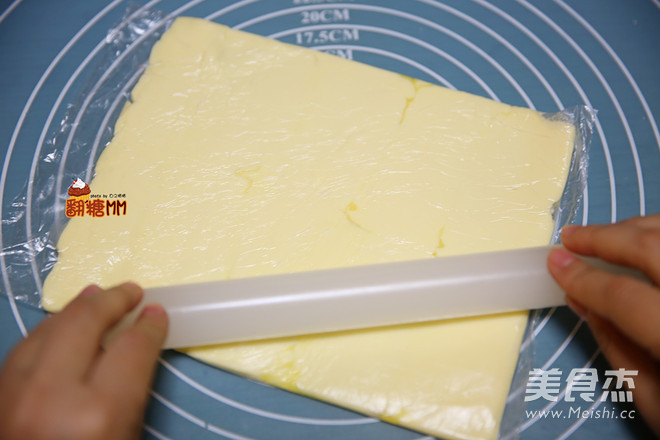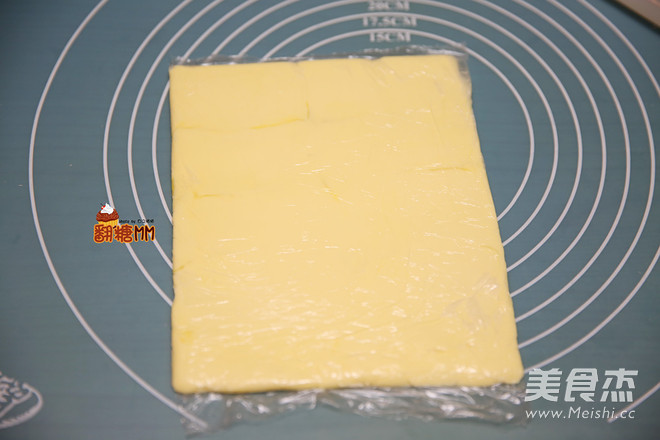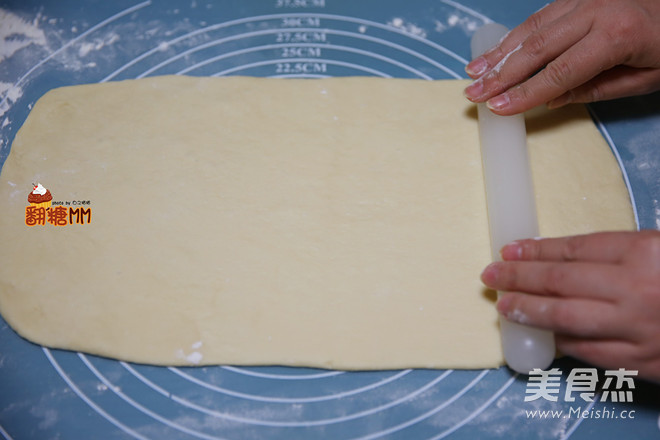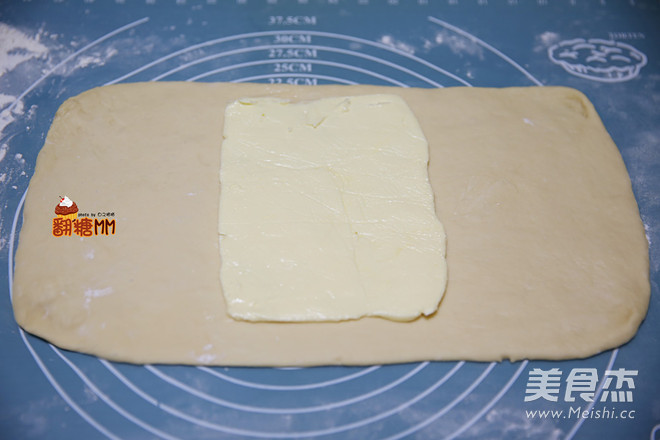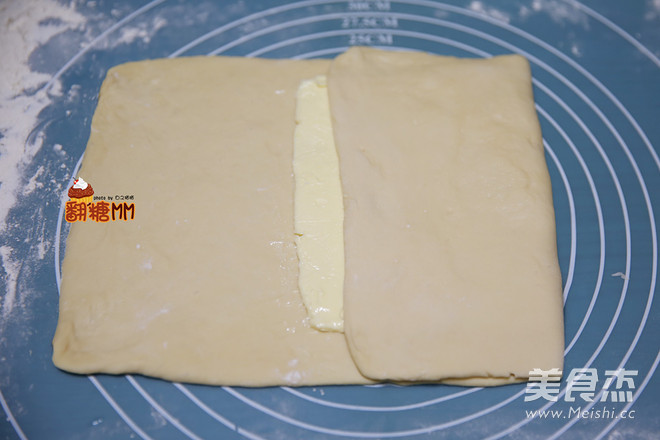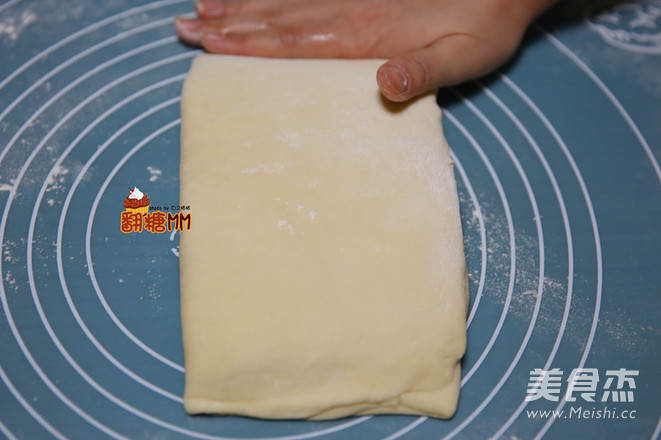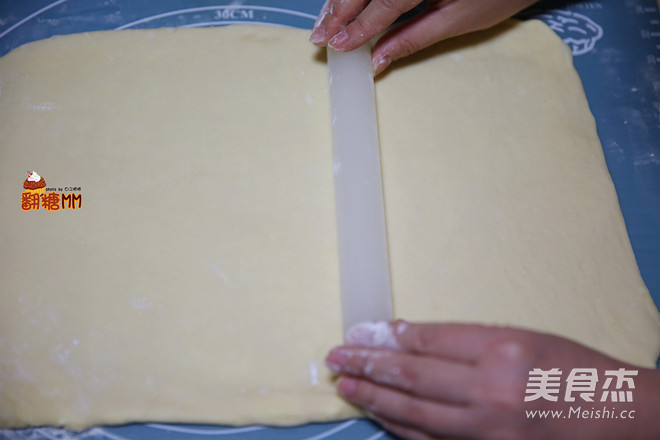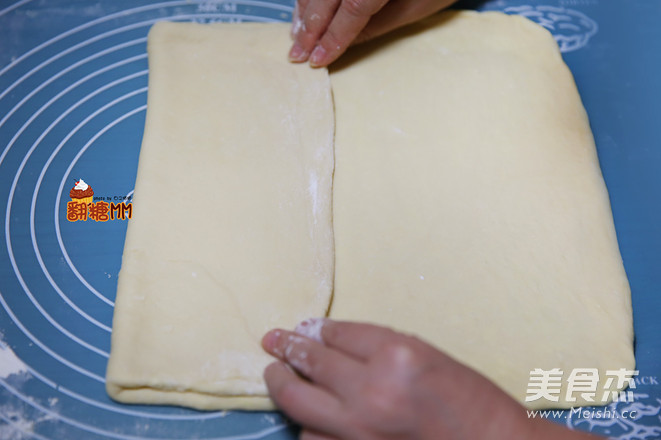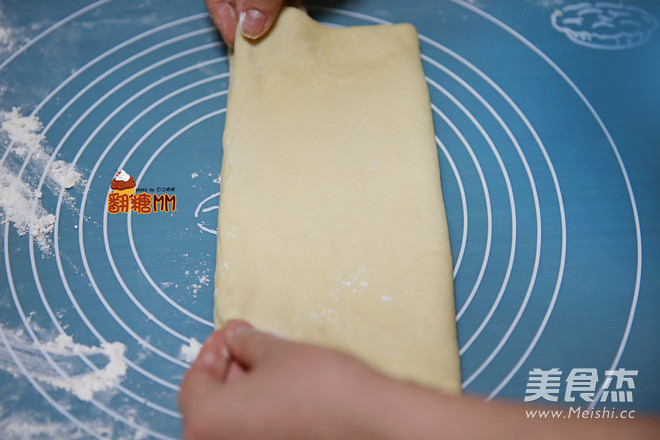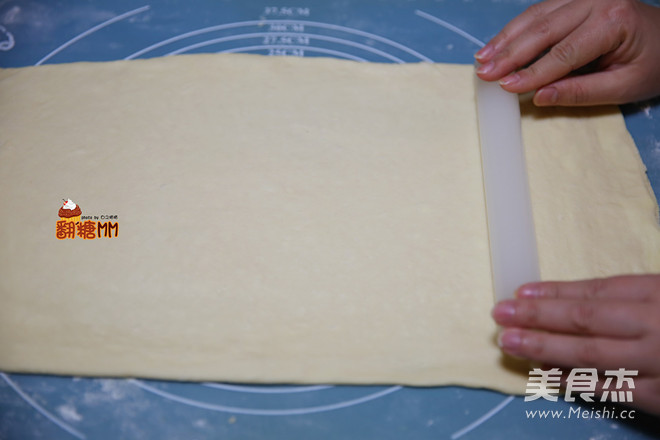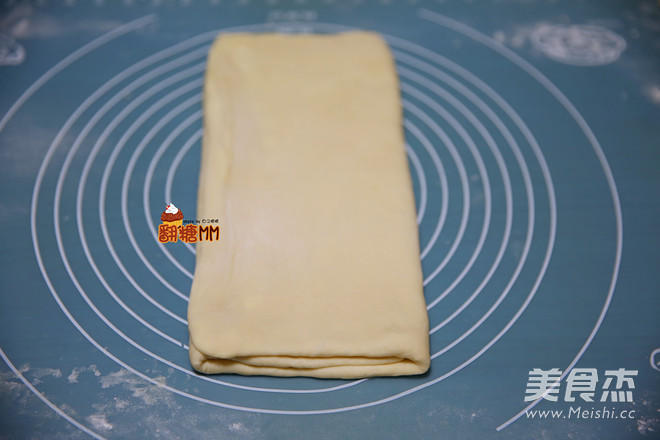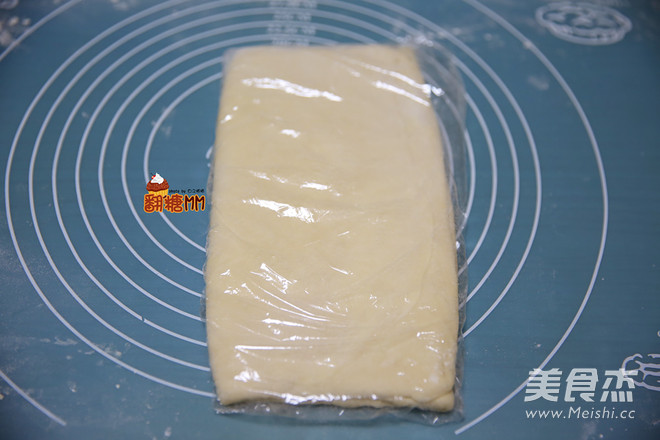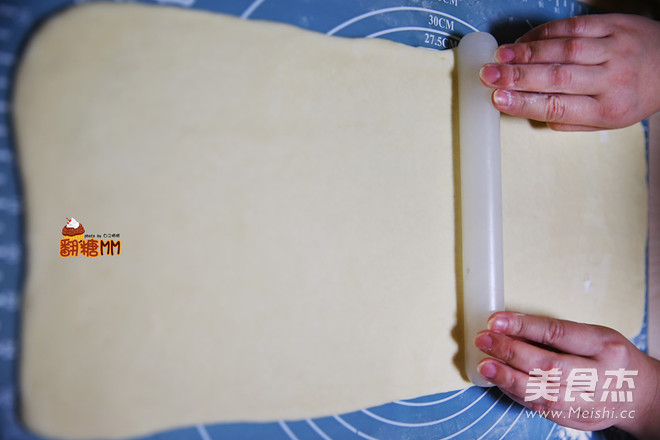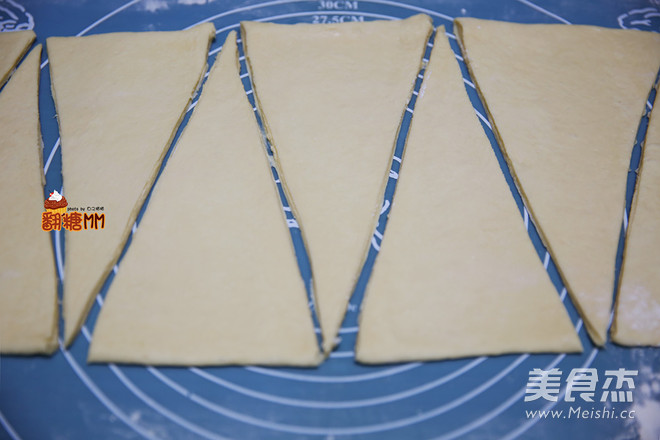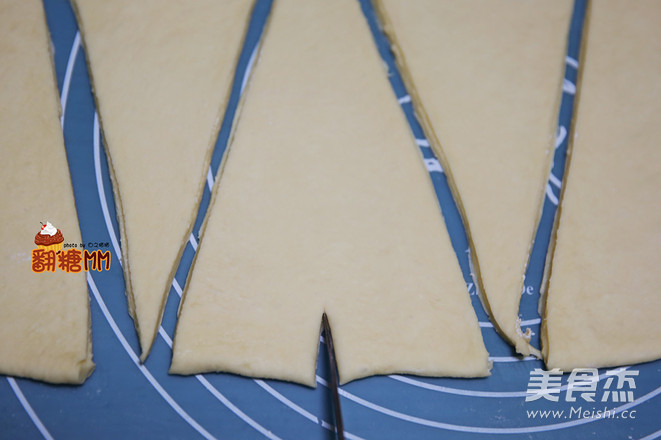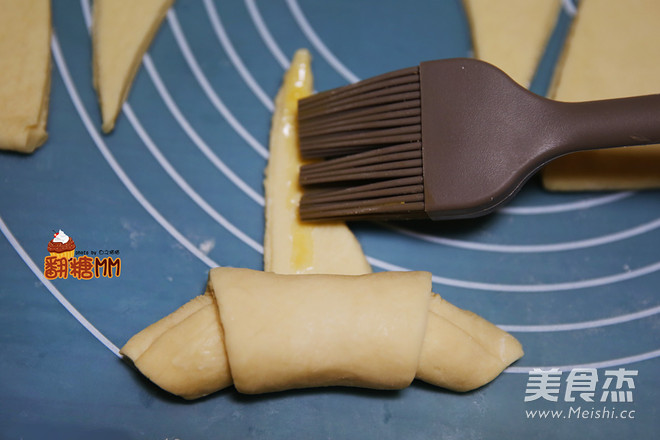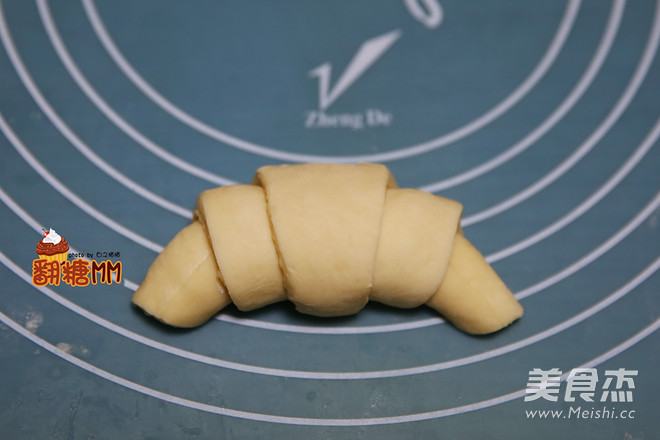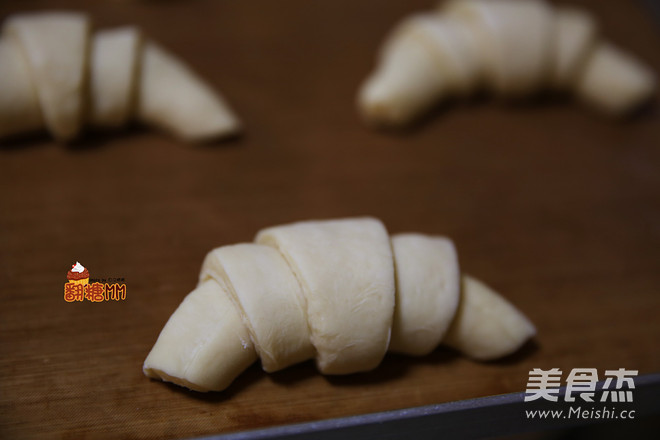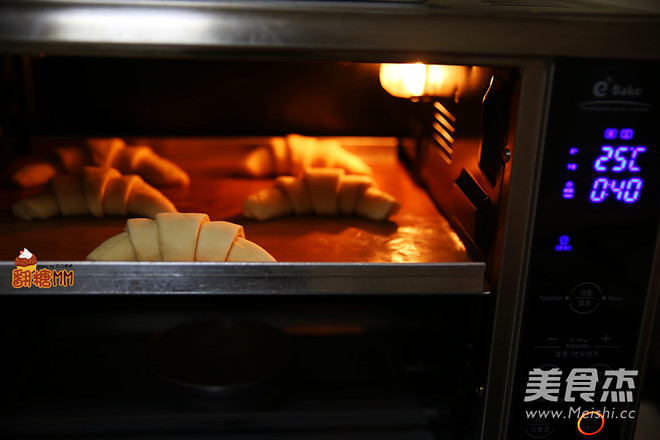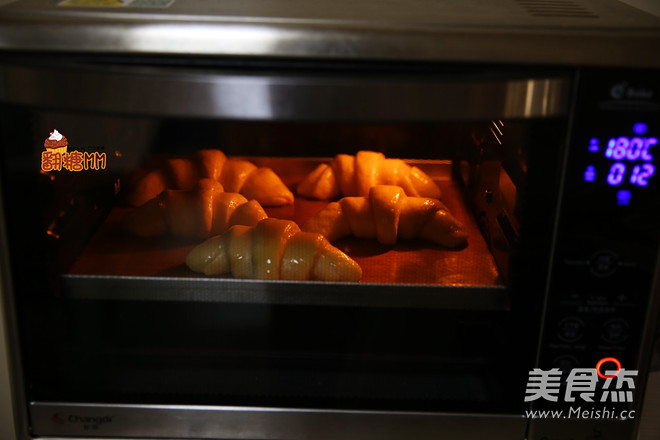Croissant
1.
Ingredients: can make 7 doughs: 170 grams of high-gluten flour, 30 grams of low-gluten flour, 35 grams of caster sugar, 20 grams of butter, 12 grams of milk powder, 40 grams of eggs, 3 grams of salt, 5 grams of dry yeast, 85 grams of water, 70 grams of butter (for wrapping)
The right amount of whole egg liquid (brushing the surface)
Baking: 180 degrees, about 15 minutes, put all the ingredients in the dough (except 70 grams of butter) into the bread machine, and perform the kneading and fermentation process.
TIPS: If you don't have a bread machine, you can knead the dough by hand, knead all the materials into a smooth dough, pull up the dough and barely lift the film, and you can start fermentation.
2.
The dough is fermented to 2-2.5 times its original size. Press a pit with your fingers. If it does not shrink or deform, it means that the fermentation is complete.
3.
Put the dough on the chopping board, knead the dough to exhaust the dough, then wrap it in plastic wrap, and place it in the refrigerator to chill and relax for 20 minutes.
4.
Wrap 70 grams in butter and cut into slices, neatly yard into the fresh-keeping bag.
5.
Use a rolling pin to roll the butter into evenly thick rectangular pieces of butter.
6.
The butter will melt when rolling, so put it in the refrigerator at this time.
7.
Take out the loose dough in step 3 and put some flour on the chopping board to prevent sticking. Roll out the dough into a rectangular slice, about 3 times the length of the butter slice, and wider than the butter slice.
8.
Take the butter slices out of the refrigerator and place them in the center of the dough slices.
9.
Flip one end of the dough over and cover the butter slice.
10.
The other end is also turned over and covered, and the upper and lower mouths are compacted by hand.
11.
Rotate the dough 90 degrees, and roll out the dough with a rolling pin. When rolling out, try to make a thin and even dough sheet, don't break the dough sheet too hard.
12.
Fold the dough sheet inward from 1/3.
13.
The other side is also folded inward to complete the first three-fold.
14.
Wrap the dough in plastic wrap and put it in the refrigerator to chill and relax for 20 minutes.
15.
Take out the loose dough and roll it out again into long slices.
16.
Repeat steps 12-13 to complete the second three-fold, wrap the dough in plastic wrap and put it in the refrigerator again to chill and relax for 20 minutes.
17.
Take out the loose dough and perform a third trifold. After the three trifolds, the croissant dough is ready. Wrap it with plastic wrap and put it in the refrigerator for 20 minutes.
18.
Take out the loosened dough sheet in step 17, and roll it into a 0.4cm thin sheet.
19.
Use a knife to cut the dough into isosceles triangles as shown in the figure
20.
Make a cut in the middle of the bottom edge of the triangle
21.
Roll up from the bottom as shown
22.
Continue to roll until you reach the top, and brush a little egg liquid on the small tip.
23.
Finally roll the bread completely
24.
All the croissants are rolled and placed on the baking tray, leaving some space between each bread
25.
Place it in a warm and humid place for secondary fermentation, about 40 minutes, and ferment to twice its original size.
TIPS: You can put a bowl of hot water in the oven for the fermentation process, and the fermentation temperature is controlled within 30 degrees, otherwise the butter in the bread will melt and cause failure.
26.
Brush a layer of whole egg liquid on the fermented bread.
Put it in the oven at 180 degrees for about 15 minutes. If the coloring is not satisfactory, extend the time appropriately.
27.
The croissant is ready!


